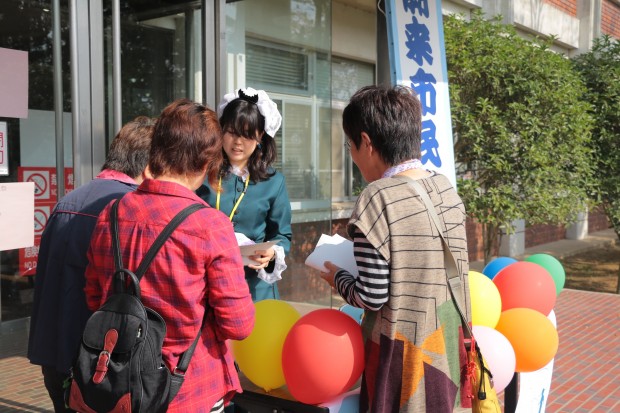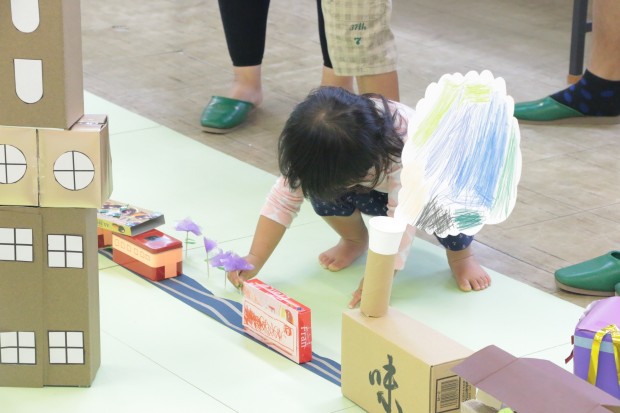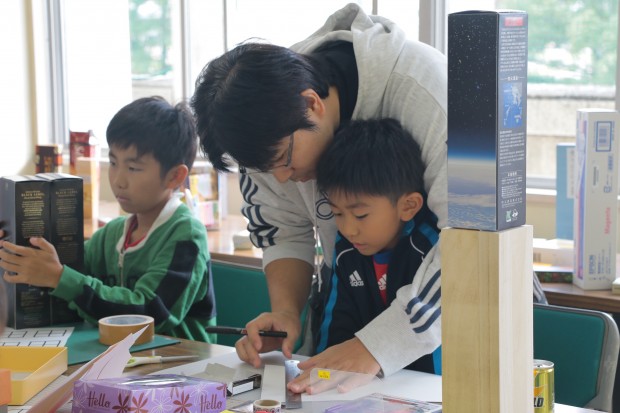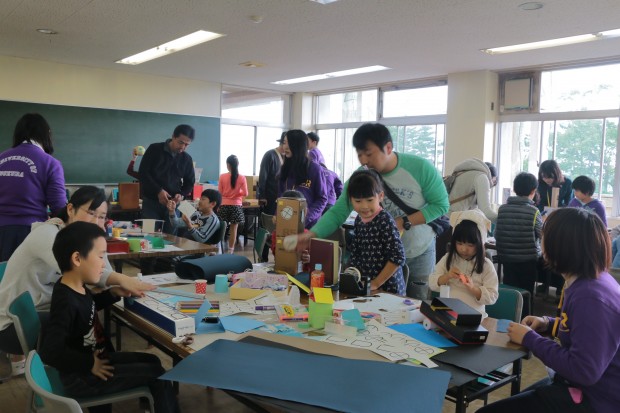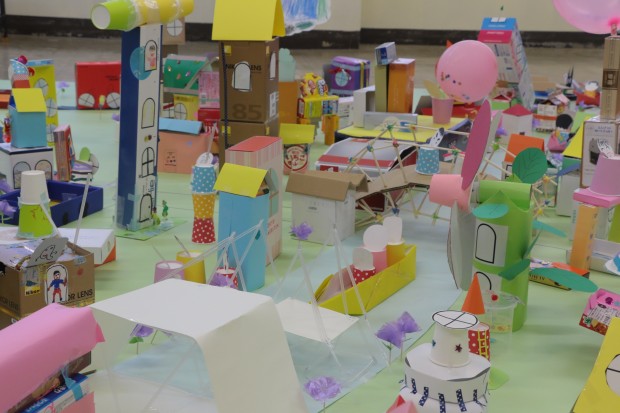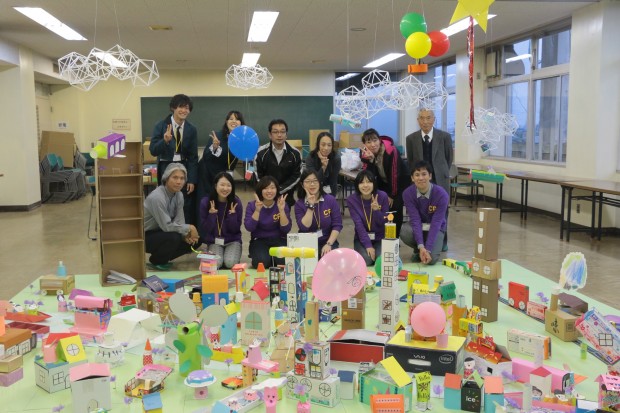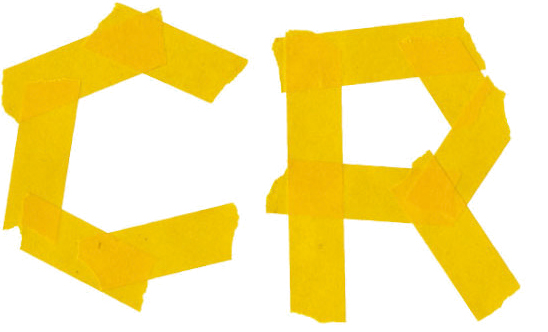On Dec. 9, the Taikan Taiken (Feel & Experience) Lab held a workshop at Ohzone Children’s Center in Tsukuba city.
In preparation for the workshop, we carried out research to understand the characteristic of the children’s center, the age group of the children, as well as the elements that distinguish the area. Based on our findings, we combined the locality, creativity and physicality of the Yatabe district in Tsukuba to come up with a storyline for a puppet show.
In deciding on the storyline, we chose the character, Iiduka Igashichi, an inventor who actually lived in Tsukuba in the Edo Period, and with reference to what we had learned from our visit to the Yatabe Local History Museum, we talked about adopting such key words as “Oda Castle”, “Japanese clocks”, “Karakuri puppets (traditional Japanese mechanized puppets)” as sub-themes.
In the end, we chose to start the story off by relating that an essential part of Igashichi’s Karakuri puppet, which is his creation, had been stolen, and that the villagers decided to make Karakuri puppets of their own to try and help Igashichi. Preparations for the performance started by practicing with the puppets, creating sound effects, choosing materials for making the puppets, checking safety concerns, getting ready for ways to engage with the children, and making use of the experiences that were acquired through the workshops.
The children at the Ohzone Children’s Center were very lively and they were very enthusiastic in their response to the puppet show and making of the puppets. In the scene where they sneak into the thieves’ lair, the children seemed to enjoy the thrill of dodging obstacles in the dark.
Through our experience in conducting workshops, members of the team discovered that games and creative means of expression might lead to emotional care in dealing with children, who are, unlike adults, harder to communicate with words alone. (Nagata, MC1 at School of Art & Design)
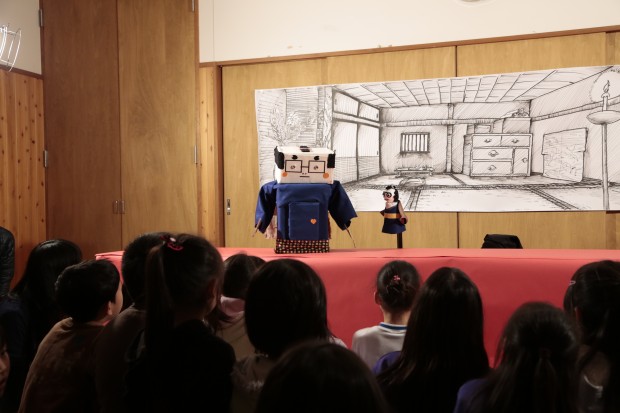

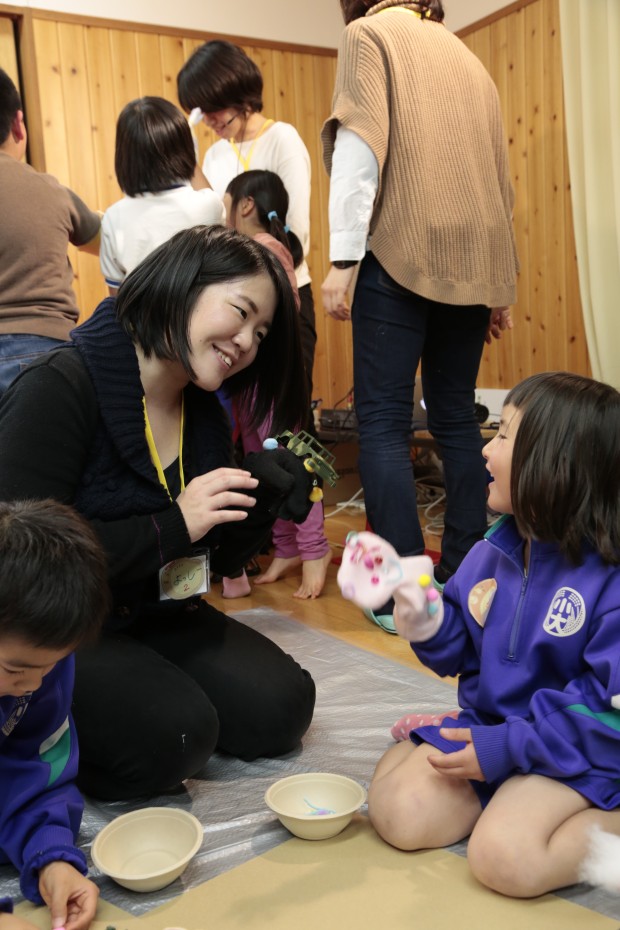
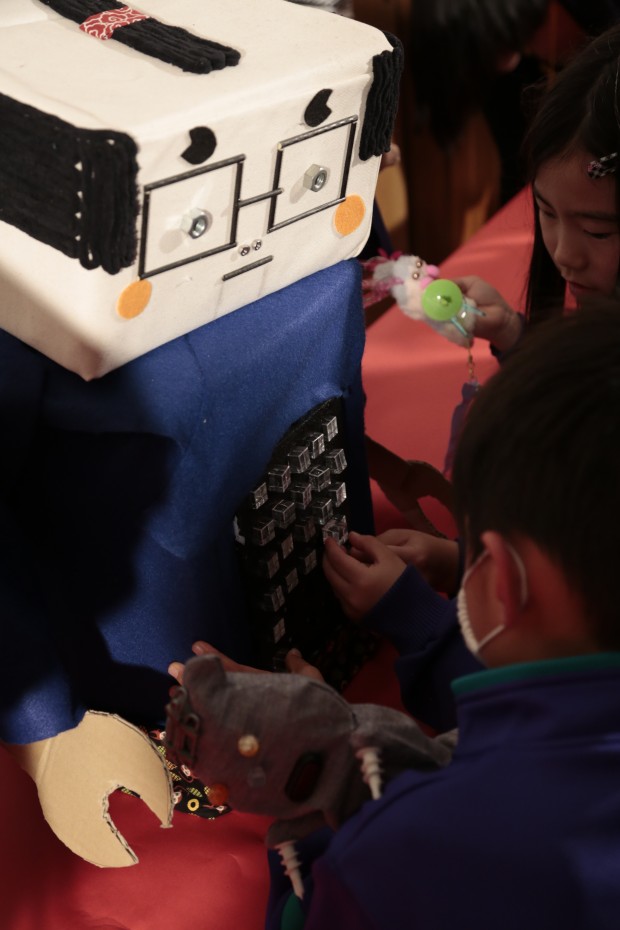

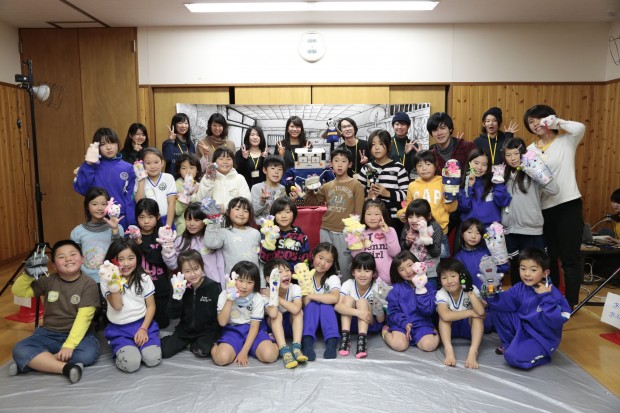
Category Archives: Notifications
CR Review Meeting for 2015 held.
On Dec. 19, Saturday, the CR review meeting was held. The students, who had completed the Creative Reconstruction Program’s Off-Campus Challenge Assignments/Off-Campus Challenge Special Assignments/Off-Campus Special Assignment I/ Off-Campus Special Assignment II/International Special Assignments, reported on their activities.
The CR project will come to an end this year, and the presentations were based on the possibilities for future developments with references to how the 4 years of activities by the teams might be remembered and how they might be continued. (Akagi)
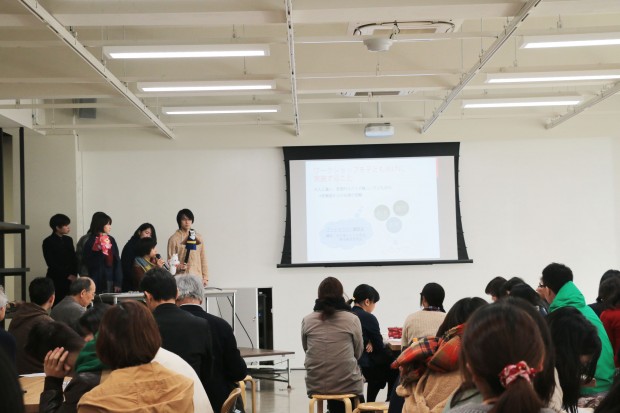



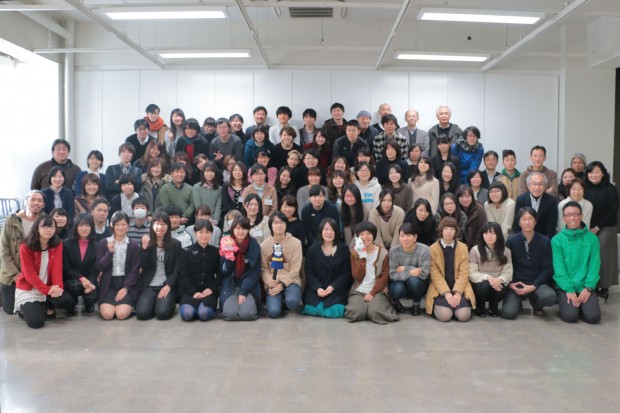
Vacant Properties Team held Idobata Gallery
The Vacant Properties Team held “Idobata Gallery” from Nov. 1 till Nov. 5.
By displaying artworks at a vacant property not in use, our goal was to create a community space where people would naturally gather around and start up a conversation, just like the way people meet up by the office water cooler to chitchat on the current gossip.
We put on display the colorful autumn-colored happi coats that we made with the staff at Fureai House and the children of Hojo Elementary School at the workshop on Oct. 24.
Many people stopped by to take a look at the exhibit, and we had a great time striking up friendly conversations with the visitors and taking photographs with them wearing the happi coats. The children who took part in the workshop came, too, wearing their original “my happi coat”!
Through the kindness of the Bureau for Promotion of Town Development, we also had the opportunity to exhibit the happi coats at a concert by the Vienna Piano Quartet that was held at Miyasei-Okura on Nov. 14. The members of the Vienna Philharmonic put on the happi coats for us, too!
The classical music concert at Miyasei-Okura.The classical music concert at Miyasei-Okura.
(Muranaka, 4th year at College of Policy and Planning Sciences)
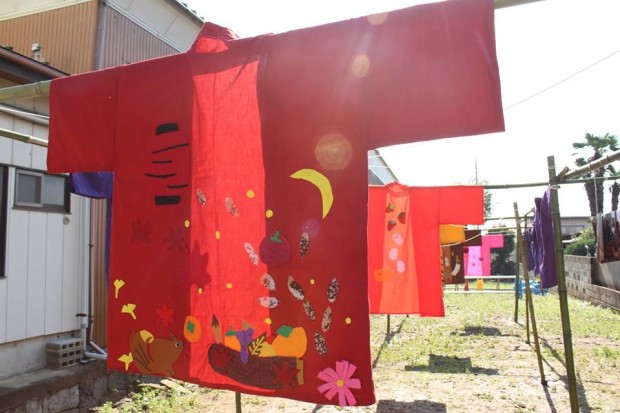
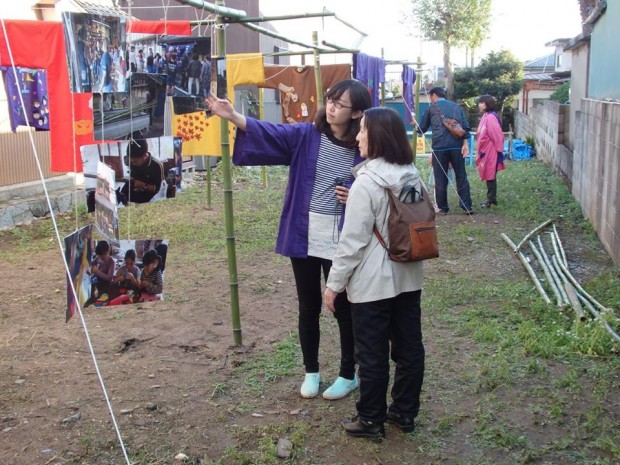

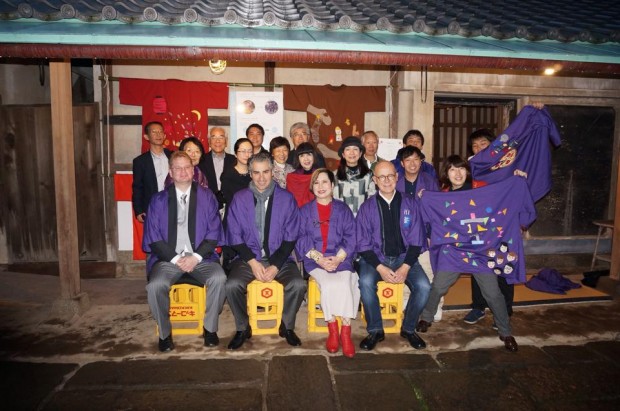
Vacant Properties Team held “Workshop to make Happi coats”.
On Oct. 24, the Vacant Properties Team held a workshop to make happi coats with the children of Hojo Elementary School.
It was a project in preparation for the “Idobata Gallery” held on Nov. 1, and together with the 5-autumn-colored happi coats for the exhibition, each participant decorated his/her own “my happi coat” at the workshop.
The “Idobata Gallery” was held in time with 2 other festivals, the Autumn Hojo Market and Mt. Tsukuba Foothills Autumn Festival, and by having the children and Vacant Properties Team members wear happi coats, we hoped to attract the attention and interest of the young generation to the festivals and the locality.
We also wished the children to get a feel of the history of Hojo by making the happi coats at the Hojo Fureai House, which used to be a kimono store.
The children were at first somewhat slow to start, but once they got the idea, they used their imagination and added their own original decorations. Since everyone worked very hard, many wonderful happi coats were made. We couldn’t wait to see them at the Idobata Gallery exhibition!
We would like to thank the staff at the Fureai House for all their support, not just on the day, but for teaching us how to sew the happi coats and helping us with other procedures as well. Thank you very much!
(Muranaka, 4th year at College of Policy and Planning Sciences)
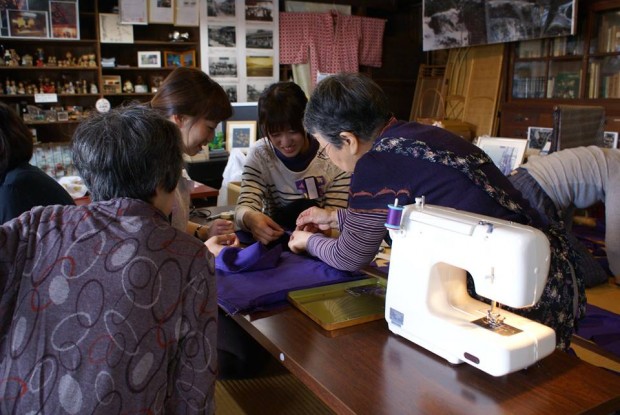

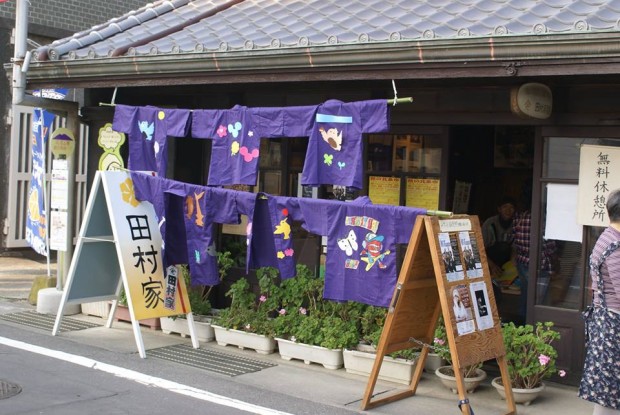
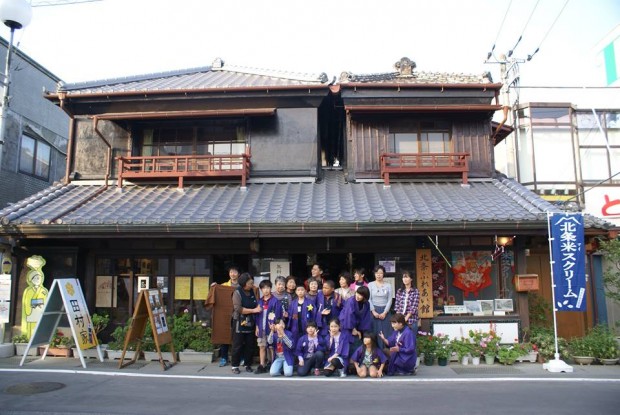
An exhibition introducing last year’s Hybrid Art Assignments will be held.
At the new GALLERY OFF GRID, which opened in Fukushima Prefecture, an exhibition introducing last year’s activities of the Hybrid Art Assignments will be held.
If you are in the vicinity, please come and check it out. (Akagi)
Into the Future of OFF GRID: Issues that Art Raises about Fukushima’s Renewable Energy.
Takuro Osaka x Fumiaki Murakami’s Lab at University of Tsukuba
Dates: Friday, Dec. 11, 2015 ~ Friday, Jan. 29, 2016
Time: 10:00 ~ 17:00
Venue: Gallery Off Grid (Fukushima-shi Aramachi, 4-7, Kencho Minami Sai-Ene Bldg. 2F)
Organizer: Gallery Off Grid Managing Committee
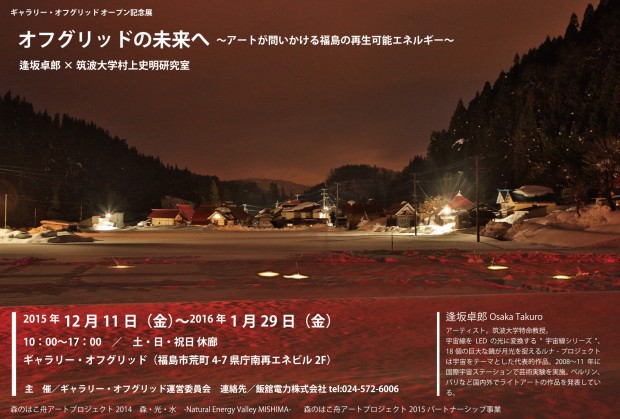
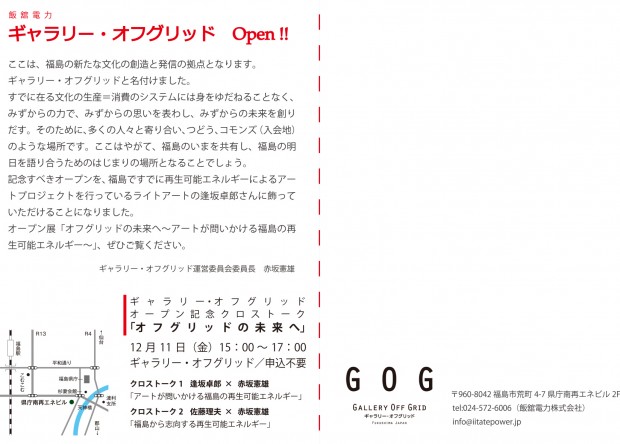
Preview: Catastrophe & Art, Session 8
At the Creative Reconstruction: Catastrophe & Art, Session 8, Junji Teraguchi, Deputy Director at the Hiroshima City Museum of Contemporary Art, will be invited to give a talk under the theme, “Hiroshima and Artists”.
Please come as anyone can attend.
(Akagi)
Date & Time: Dec. 4, Friday, 6th Period, 16:45-18:00
Venue: 5C416

Kamado Project “The Autumn Hojo Market”
The Autumn Hojo Market was held on Nov. 1. Although it is getting colder by the day, we were blessed with good weather and got off to a good start!
This time, the Kamado Project workshop attempted to make one’s own kamado, “my kamado”. At first, everyone was like, “What do you mean by my own kamado? But as we got started, we ended up making many charming kamado, as people were absorbed in making their own unique shapes and fixing stones and colorful bricks to their original kamado. The shaped kamado is normally dried under the sun for 2 or 3 days, but this time for faster drying, we used a large earthen charcoal-burning kiln. The children, who also took part, watched with great interest their kamado being fired like a pizza.
In the evening after the Hojo Market was over and everything cleaned up, the Kamado Project team and the members of the Hojo Commerce and Industry Association and the Development and Promotion Bureau got together for a social and friendly dinner. It was an opportunity for the new members of the Kamado team who joined us this year to formally meet the people of Hojo. We heard stories about the beginnings of the Kamado Project, when they started working in Hojo, and about the tornado, which was why the project started in the first place. We had a very enjoyable time with delicious dishes and good sake. We hope to continue our activities with the blessings and favors of the Hojo people.
(Machinaga, 3rd Year at School of Art & Design)
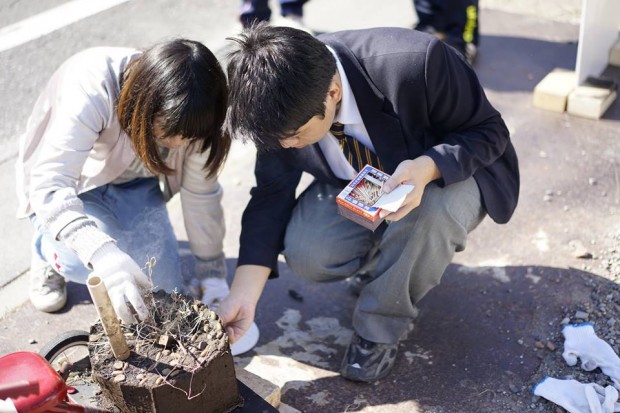
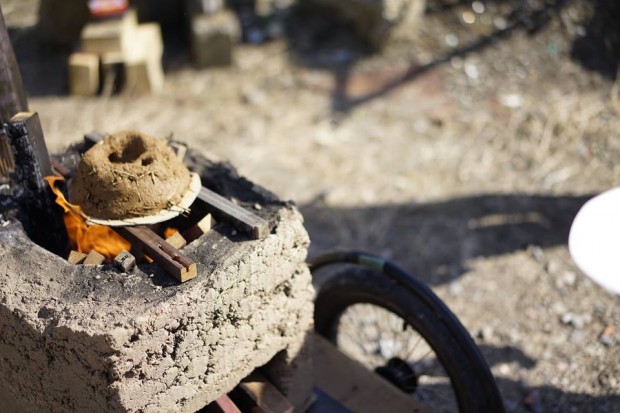
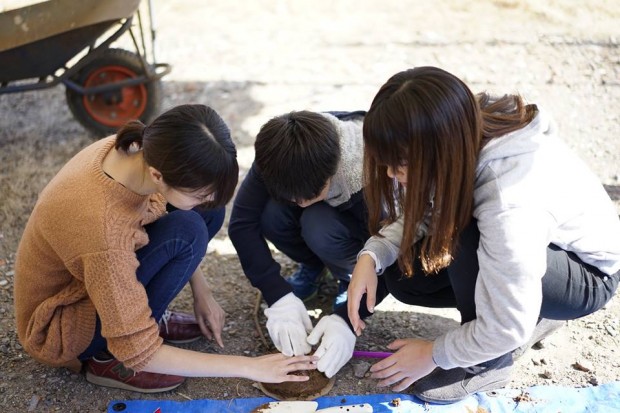
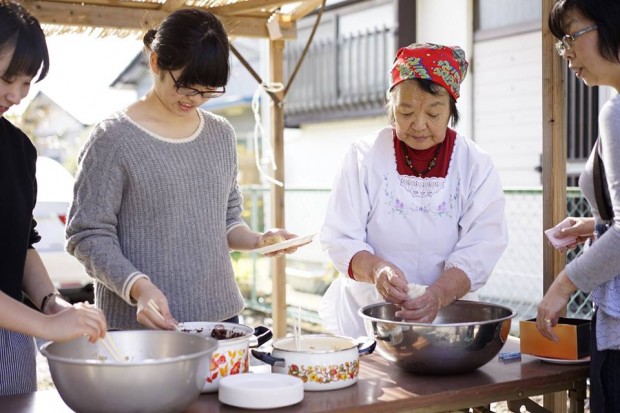
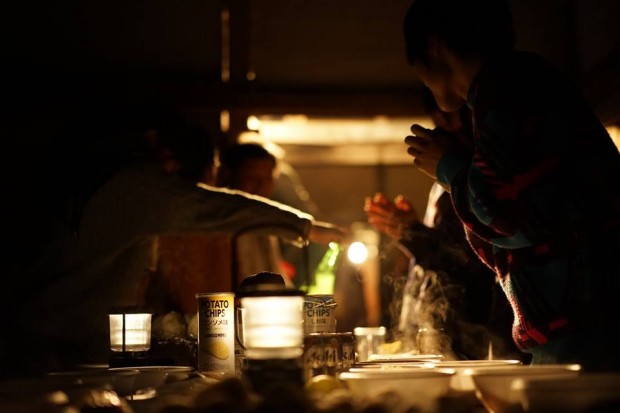
Preview: Catastrophe & Art, Session 6 & 7
The Creative Reconstruction: Catastrophe & Art, Session 6 & 7 will be held over 2 consecutive periods. At Session 6, Mayumi Sugawara, an associate professor at Wakayama University, will be invited to give a talk under the theme, “The Meiji Restoration and Ukiyo-e”. At Session 7, Hideyuki Yanagisawa, Chief Curator of the Ohara Museum of Art, will be invited to give a talk under the theme, “Art Galleries/Museums and Disasters”.
Please come as anyone can take part.
(Akagi)
Date & Time: Nov. 20, Fri, 6th period, 16:45-18:00/7th period, 18:15-19:30
Venue: 5C416

Screening of “Iwaki Note (FUKUSHIMA VOICE)”, KKH x Musashino Art University x Student Directors
On Nov. 14, Saturday, a screening of “Iwaki Note (FUKUSHIMA VOICE)” was held in Shinjuku.
The screening was held in time with the visit by the instructors and students of Sweden’s Royal Institute of Art (KKH), which is an overseas partner university of Tsukuba University, and with the participation of the students from the Department of Imaging Arts at the Musashino Art University. Hirano-san, a graduate student of Tsukuba University, who had been studying at KKH until last September, organized the event. Three student directors of “Iwaki Note (FUKUSHIMA VOICE)” also took part in the screening and a Q&A session was held after the screening. The students from Sweden asked many questions about the current situation, particularly that of Iwaki city and the evacuees, the relationship between the student directors and the people who appeared in the movie. Almost two years have passed since the completion of the movie, and since the conditions in the disaster-stricken areas are changing every hour (Two and a half years since the devastating earthquake.), the role and significance of the movie may be changing as well. Perhaps it is time for a discussion, primarily with the student directors and the production side, about some aspects of the project. (Iida)


Itako Team: “Creating an Imaginary Itako Town with Tsukuba University Students!”
On Nov. 7, Saturday, a workshop, “Creating an Imaginary Itako Town with Tsukuba University Students!” was carried out at the Itako Citizens Cultural Festival. It was an event to create an imaginary town using empty boxes and paper cups.
Many children came and took part in making buildings, people and vehicles, using their imagination and available materials. The children made a balloon flying in the sky, a Ferris wheel, an aquarium and much more. We were constantly reminded of how highly creative children can be.
Some of the adults that came with the children also took part and got absorbed in the work, and we were all able to enjoy the process together as well.
As a stunt to attract people who would not take part in the creative process, easy-to-attach irises were handed out at the reception on the 1st floor of the building. As a result, people of a wide range of age groups came and we were able to complete the Itako Town with the participation of many people.
By the end of the day, we were thrilled to see the completion of a town so beautiful, something far better than what we had imagined at the start. What was most gratifying was the fact that, through the creative workshop, the children and the adults engaged in lively conversation among themselves. With our art project, we feel that we were able to link together the people of Itako. It would be our joy if, in their effort to reconstruct Itako, the web of the residents’ network were to further expand.
(Ogasawara, 4th Year at School of Art & Design)
